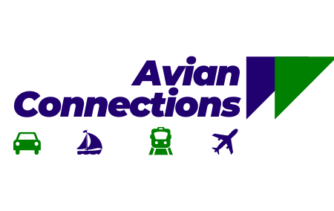AVIAPHOBIA
Fear of flying or Aviophobia is acute anxiety characterized by often visible physical reactions, eg. heart palpitations, shaking, tantrums, crying, nausea, sweating, dizziness, clouded thinking, irritability, anincrease of heart rate, increase of respiration, etc, on either the thought of flying or the experience itself.People with this condition experience intense, persistent fear or anxiety when they consider flying, as well as during flying. They will avoid flying, and the fear and anxiety, if they can. The avoidance causes significant distress and impair their ability to function eg take-off, bad weather, and turbulence appear to be the most anxiety provoking aspects of flying. While airport security measures, such as long queues, body searches, and X-ray scanners can also trigger feelings of anxiety in some
2 of 7 Despite the chances of a plane crash being as low as one in 11 million, a disproportionate amount of people still feel nervous or anxious when flying. Depending on how severe the fear is, Others might have a full-blown panic attack.The eventual manifestation of aviophobia or the amplification of this can be from heavy media coverage of airplane accidents. Seeing images of an airplane crash on TV or in the newspaper can sway one’s opinion on the safety of air travel without even considering the true safety. For some, even the prospect of planning future air travel and/or process of going through the travel can trigger these symptoms of anxiety.
3 of 7 Sometimes, the fear is simply the result of a bad experience in the past, such as a flight with severe air turbulence. The most extreme manifestations can include panic attacks or vomit at the mere sight or mention of an aircraft or air
4 of 7 As many as 20 to 30% of people are apprehensive about flying, and 2 to 10% have an actual phobia. But it could affect even more people occasionally people know the fear is irrational. 60% of survey respondents who reported it admitted being scared was unnecessary. Even so, 20% said their fear would increase days or even weeks
5 of 7 According to the survey, the top reasons people get scared while in the air: Turbulence, fearing a plane crash, not feeling in control of the situation, the takeoff, and landing, unexplained noises from the planeAviophobia as a result of related phobias, wherein 60% (or more) of people with a fear of flying has some other anxiety disorder and other related phobias. Often, the fear is not due to the flying itself but stems from related factors, such as:
fear of being in an enclosed space or claustrophobia fear of crowds or ochlophobia A fear of hijacking or terrorism or agoraphobia. is an anxiety disorder characterized by symptoms of anxiety in situations where the person perceives their environment to be unsafe with no easy way to escape. a fear of heights or acrophobia, people with a fear of a significant measure of height often have the feeling of hopelessness or numbness being inside a fuselage flying incredible heights above the ground. Fear of flying is a common phobia because the causes are diverse and often due to other related phobias. specific treatment options are needed to address the particular fear involved. Treatment is imposed on the relative and their respective stimulation. Treatment options include cognitive behavior therapy (CBT) this is to reduce the negative feelings and eventually conquer the fear and can help minimize the impact of aviophobia.
Exposure therapy can also lower the effects of the condition. It is a process of growing acclimated to and eventually accepting the source of fear. however, there is little evidence that any treatment or the combination of, can completely eliminate the fear of flying. Studies of interventions have reported rates of reduction in anxiety of around 80%. ………
WIKIPIDIA……………..MNC
WEBSTER……………………..MNC

